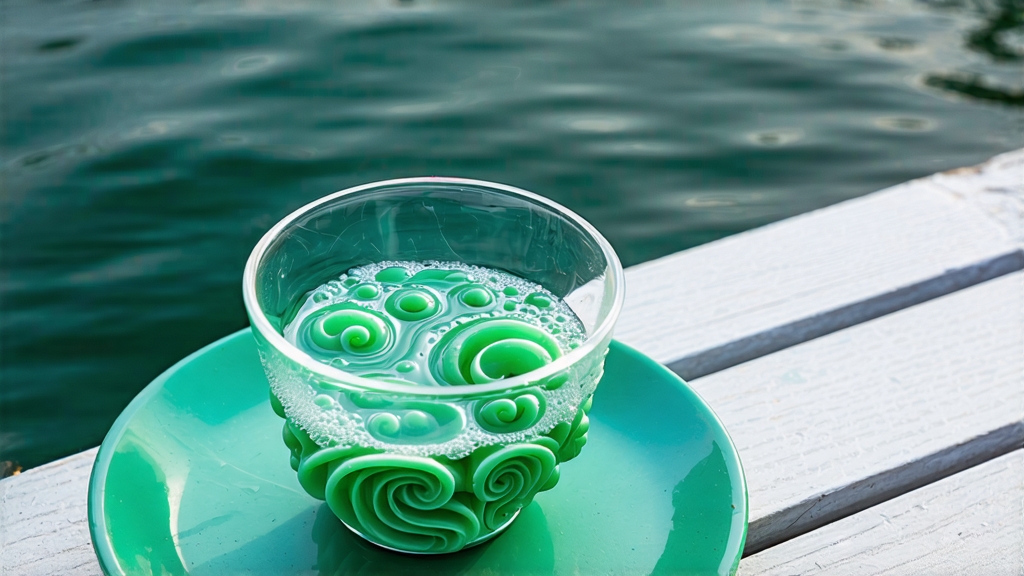
Tucked between the mist-laden hills of Dongting Mountain and the gentle ripples of Taihu Lake in Jiangsu Province, Biluochun—literally “Green Snail Spring”—has captivated Chinese tea lovers since the late Ming dynasty. International drinkers often meet it under the phonetic name “Pi Lo Chun,” yet whatever the spelling, the leaf tells the same story: one of imperial accolade, maritime terroir, and craftsmanship so precise that seven thousand buds yield barely a pound of finished tea.
History and Legend
According to local chronicles, tea farmers on Dongting’s East and West mountains originally called their crop “Xia Sha Ren Xiang”—“Scary Fragrance”—because its heady aroma startled villagers who stumbled upon wild shrubs. The Kangxi Emperor, touring the region in 1699, found the name inelegant and rechristened it Biluochun for its snail-like spiral and spring harvest. Court annals record the leaf among the “Ten Famous Teas” presented at the Summer Palace, cementing its status for the next three centuries. Maritime trade later carried it to Tsarist Saint Petersburg, where Russian aristocrats blended it with samovar water and sugar, unaware they were sipping an imperial tribute.
Terroir and Cultivars
Dongting’s microclimate is a marriage of lake and hill: cool nights trap moisture, while morning mist filters ultraviolet light, slowing photosynthesis and concentrating amino acids. Two main cultivars dominate: the small-leaf “Dongting Qunti” landrace, prized for floral complexity, and the slightly hardier “Fuding Dabaicha” clone introduced in the 1960s to extend picking season. Organic gardens interplant peach, plum, and loquat trees; their blossoms fall onto tea rows, adding a subtle fruity note that chemists attribute to shared volatile esters.
Plucking Standards
The harvest window is brutally short: only fifteen days between Qingming and Grain Rain when buds remain unopened and the apical leaf is the size of a sparrow’s tongue. Pickers work at dawn, wearing cotton gloves to avoid hand oils that could mask fragrance. The benchmark is one bud plus an unfolding leaf no longer than 2.5 cm; 90 000 such sets are needed for a single kilogram of top-grade Biluochun. Baskets are woven from thin bamboo slats to prevent bruising, and leaves are carried downhill within two hours—any delay triggers enzymatic oxidation that would shift the tea toward oolong character.
Crafting the Spiral
Withering is skipped entirely; instead, the freshly picked shoots are spread no thicker than 2 cm on perforated bamboo trays and lowered into a charcoal-fired trough kept at 180 °C. In a dance known as “sha qing” or kill-green, artisans toss the buds every four seconds for three minutes, using wrist flicks that cool the leaf mid-air. The temperature is then dropped to 70 °C and the real shaping begins: palms press the tea against the trough, rolling it into tight spirals while residual moisture escapes as fragrant steam. A master can judge readiness by ear—when the rustle becomes a whisper, the curl is set. Final drying at 50 °C reduces moisture to 5 %, locking in the downy white tips that resemble frost on jade.
Chemical Signature
Gas chromatography reveals why Biluochun smells like a spring orchard: linalool and geraniol dominate, accompanied by cis-3-hexenol that evokes fresh-cut grass. The lake mist elevates theanine (≈ 2.8 %) relative to catechins, yielding sweetness without astringency. A rare compound, dihydroactinidiolide, normally found in loquat fruit, appears in trace amounts, corroborating the interplanting lore. When brewed at 75 °C, these molecules volatilize in succession—first grassy, then peach, finally a lingering orchid finish—creating the layered “three fragrances” prized by judges at the National Tea Evaluation Cup.
Grades and Nomenkature
Chinese commercial standards divide Biluochun into six grades, but connoisseurs speak of three micro-locations: Mingqian “Qie” (pre-Qingming bud-only), Yuqian “Zhen” (Grain Rain bud-leaf), and Chunwei “Pian” (late-spring larger leaf). Top lots carry the prefix “Dongshan” (East Mountain) because the